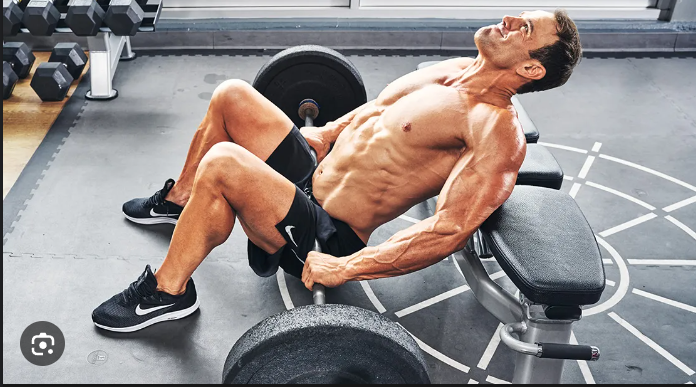Stay fit and healthy with these recommended exercises for men. Discover the best exercises to incorporate into your daily routine for optimal health and wellness.
Guys, be sure to include strength training in your exercises regimen.
Not only can you build muscle and maintain your fitness, but so can professional athletes. It’s actually a crucial aspect of aging healthily.
Sarcopenia, a degenerative loss of muscle mass associated with aging, causes adults to lose as much as 3% to 5% of their muscle mass every decade, starting after age 30. Although it’s normal for our bodies to begin losing muscle as we age, there are ways to slow down or even reverse this process.
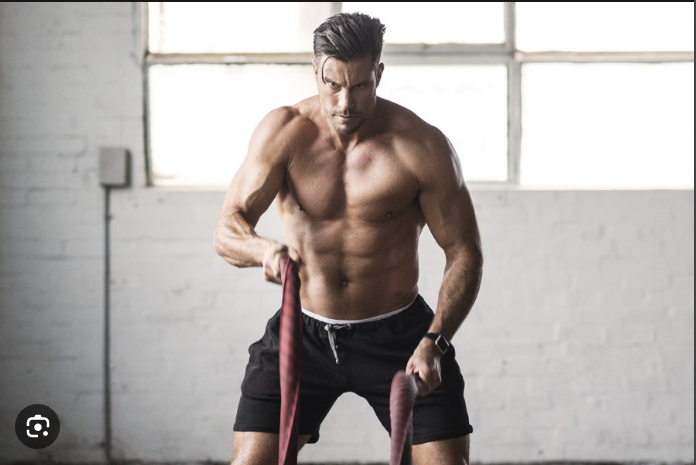
Fairfax Hackley, a personal trainer located in Fairfax, Virginia, says that while rebuilding muscle and strength requires dedication and persistence, it is possible at any age.
The U.S. Department of Health and Human Services has developed physical activity guidelines that recommend adults perform at least two hours and thirty minutes of moderate-intensity aerobic activity or one hour and fifteen minutes of vigorous-intensity aerobic activity per week. The guidelines also advise adults to engage in two or more days a week of moderate-to-intense muscle-strengthening exercises that target all major muscle groups.
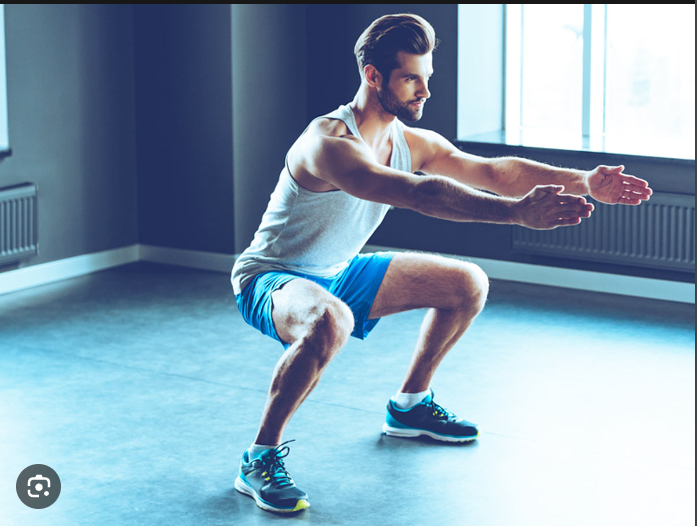
According to Hackley, it basically comes down to moving more and sitting less during the day.
Although there isn’t a time machine or fountain of youth to stop aging, exercising and building muscle, especially through resistance training or strength training, can help you retain more muscle mass as you get older. Exercise also contributes to the development and maintenance of bone mass and density.
1. Bodyweight squats
The popular saying in the gym is “Never skip leg day.” This is due to the fact that leg exercises are essential for developing a powerful, well-rounded physique.
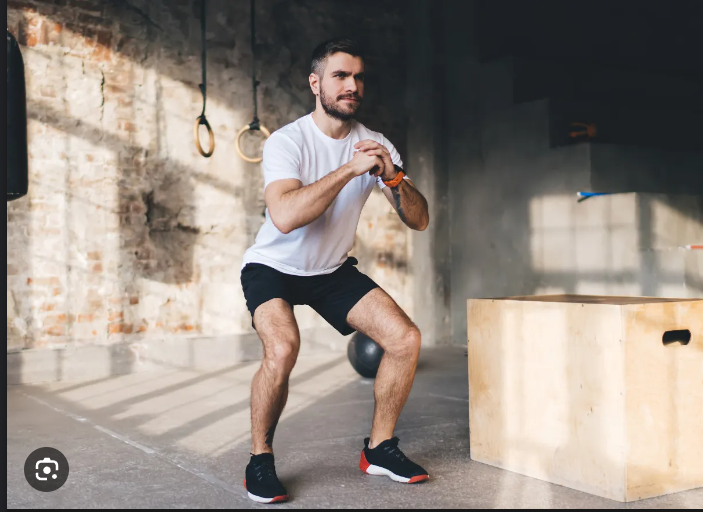
To build strong leg muscles, however, you don’t need dumbbells, barbells, or other exercise equipment. With no equipment needed, bodyweight squats are a great way to work out several body parts.
Squats strengthen a variety of muscle groups, such as:
- Calves.
- Core.
- Gluteal muscles.
- Hamstrings.
- Hip flexors.
- Lower back.
Steps:
- To perform bodyweight squats, stand tall with your feet shoulder-width apart, with your toes pointed slightly out.
- With your core engaged and your chest upright, push your buttocks out and lower your body slowly until your quads are parallel to the floor, as if you were sitting down in a chair.
- Hold the position for a second.
- Return to the standing position.
2. Pushups
“Drop and give me 100!” is likely to be yelled at a recruit by an irascible drill sergeant in any military boot camp movie you’ve ever seen.
“The military uses pushups as a great upper-body functional movement to develop strength, resilience, stamina, endurance, and great core strength,” Hackley explains.
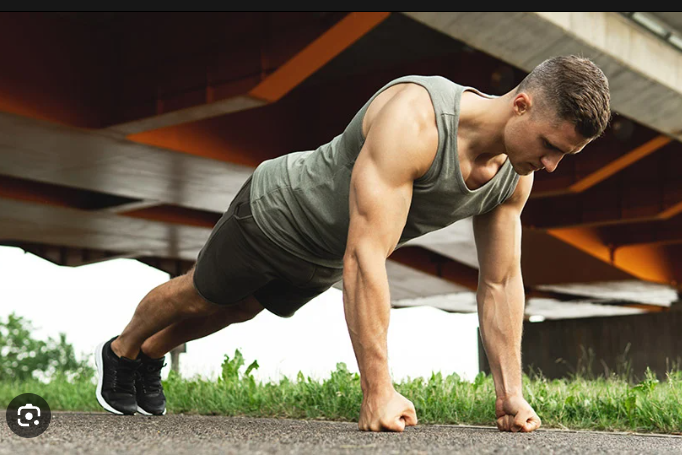
Of course, pushups are beneficial to people of all backgrounds.
You should include pushups in your upper-body or full-body workout days because they are a great way to work out your abs, chest, and lower back. One of the best things about pushups is that you can perform them almost anywhere, both indoors and outdoors, and you don’t even need any special equipment.
Steps:
- To perform a pushup, place your palms outside of your shoulders on the floor.
- Keep your arms and legs straight and your spine aligned.
- Lower your chest an inch above the floor.
- Keeping your core engaged, press through your palms to raise yourself back up.
3. Forearm planks
Whether you love them or not, planks are an excellent core exercise.
“They’re great for increasing spinal stability, which can be helpful with mitigating back pain,” says Nick Balestriere, a health coach at Cenegenics’ age management medical office in Boca Raton, FL.
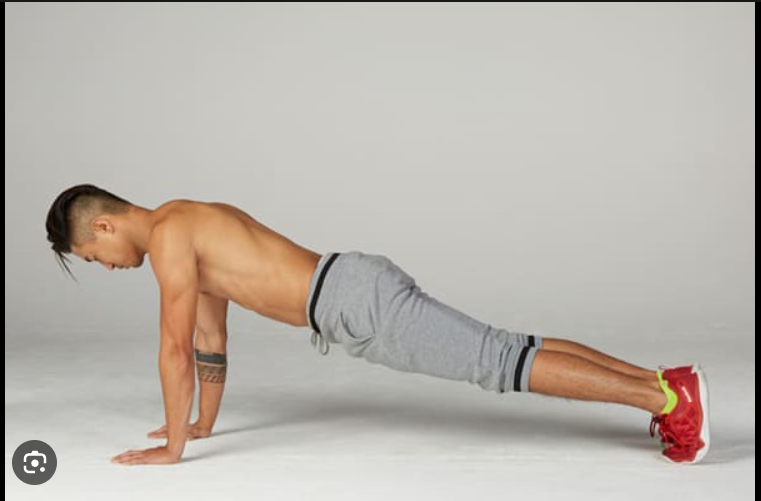
They’re also a fantastic form of exercise that you can perform anytime, anywhere, without the need for expensive exercise gear.
Steps:
- With your elbows bent 90 degrees, rest both forearms on the floor.
- Keep your shoulders above your elbows.
- With your core engaged and your hips leveled, hold your body in a straight line from the top of your head to the tips of your heels.
4. Burpees
According to Hackley, burpees are a full-body exercise that can be done as a warm-up, a main workout, or a way to end your workout. They’re easy on your joints and feet because they have low impact. This exercise is an excellent method to burn calories while improving your muscle tone, strength, and flexibility.
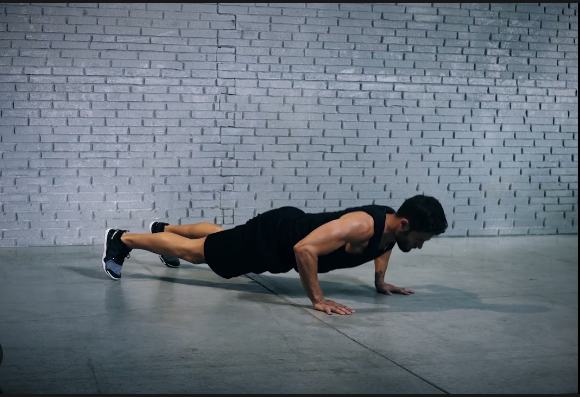
Burpees build muscle in a variety of areas of the body, such as your
- Abdominals.
- Calves.
- Deltoids.
- Glutes.
- Hamstrings.
- Lower back.
- Pectorals.
- Quadriceps.
The burpee essentially combines three exercises into one fluid movement: squat, pushup, and jump.
Steps:
- Begin with your arms down by your sides and your feet about shoulder-width apart.
- Drop down into the squatting position and place your palms on the floor in front of your feet.
- When your palms hit the floor, lock your arms and shoot your feet out into a high-plank position. Be sure to keep your spine straight and your core tight.
- Bend at your elbows to lower your chest to the ground and back up, like a traditional pushup.
- Bring your feet back to your hands and land in a squat. Your feet should be outside of and slightly behind your hands.
- Stand up and jump while reaching your arms above your head.
- To absorb the impact, land with your knees slightly bent. When your feet hit the ground, start lowering yourself for another rep.
5. Chin-ups and pull-ups
Similar exercises that can help you develop the muscles in your arms, back, and shoulders are pull-ups and chin-ups.
“Pull-ups and chin-ups are one of the best upper-back exercises one can do,” Hackley claims. When one or both exercises are mastered, incredible strength will develop. They can be performed anywhere there is a horizontal bar available, and they are excellent exercises for functional movement.”
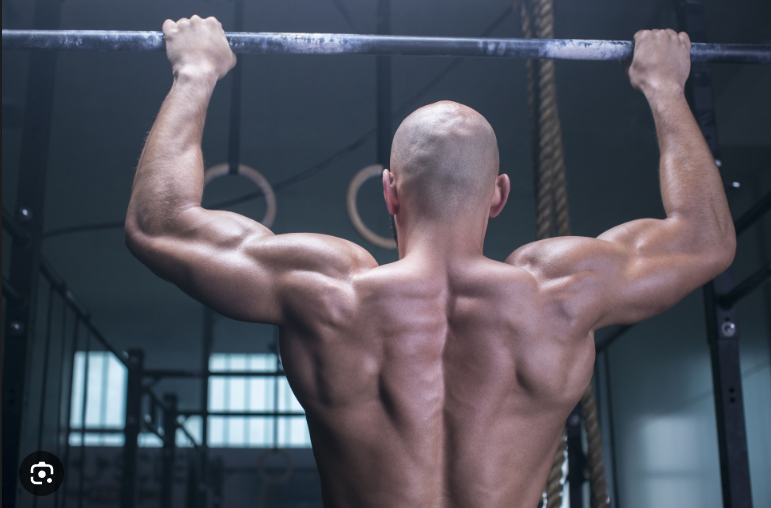
In both exercises, you grab a horizontal bar and pull your body up, but the primary difference in how you execute each exercise is in the grip. To do a chin-up, you’ll grab the bar with your palms facing toward you. To do a pull-up, you’ll grip the bar with your palms facing away from you.
For many people, the chin-up is slightly less difficult to execute because it’s easier to use the muscles in your shoulders, arms, and forearms than when you are doing a pull-up.
As to which is preferable, it depends on your goals, Hackley says. Chin-ups place more emphasis on building up your biceps and pecs, while pull-ups accentuate your back and shoulder muscles; however, both forms of exercise will benefit all of those muscle groups. Some people will struggle to do one chin-up or pull-up at the beginning, while others may be able to do 50 or more. The more you do, the stronger you will be and the more you’ll be able to do.
Steps:
- With either an underhand grip for a chin-up or an overhand grip for a pull-up, firmly grip the pull-up bar with your hands shoulder-width apart.
- Straighten your arms and move your legs off the floor to hang from the pull-up bar.
- While engaging your arm and back muscles, bend your elbows and pull yourself up until your chin is above the bar.
- In a controlled fashion, lower yourself to your original position.
Also read-Stronger Shoulders : Best Exercises for Stronger Shoulders For Good Health And Good Health
Disclaimer: The opinions and suggestions expressed in this article are solely those of the individual analysts. These are not the opinions of HNN. For more, please consult with your doctor.
images source: Google







